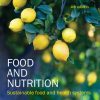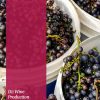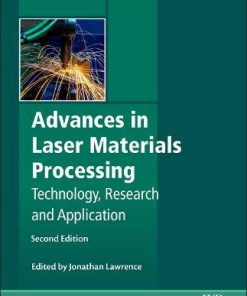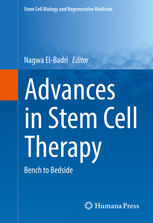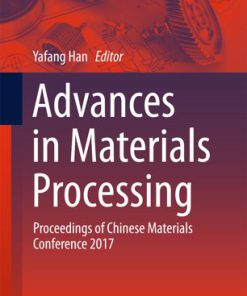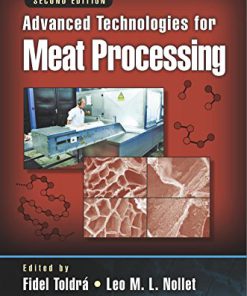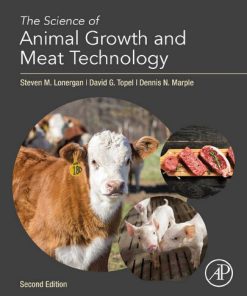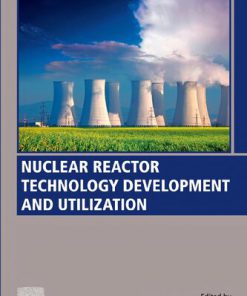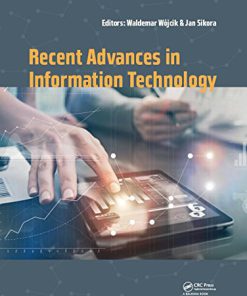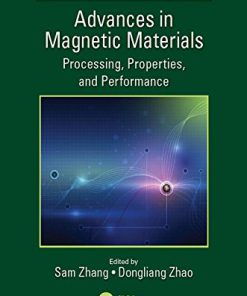Advances in Meat Processing Technology 1st Edition by Alaa El Din Bekhit 1315354668 9781315354668
$50.00 Original price was: $50.00.$25.00Current price is: $25.00.
Advances in Meat Processing Technology 1st Edition by Alaa El-Din A. Bekhit – Ebook PDF Instant Download/DeliveryISBN: 1315354668, 9781315354668
Full download Advances in Meat Processing Technology 1st Edition after payment.
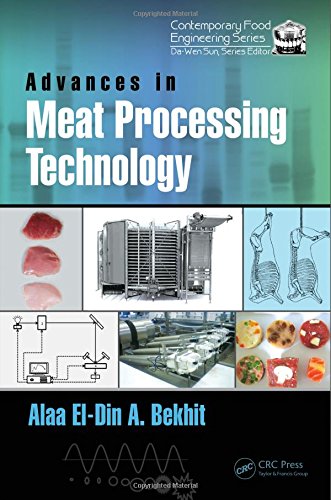
Product details:
ISBN-10 : 1315354668
ISBN-13 : 9781315354668
Author: Alaa El-Din A. Bekhit
Meat is a unique biological material with a central importance in nutrition and health. Advances in Meat Processing Technology merges the expertise of meat scientists and food engineers in a holistic approach toward the processing of meat. The meat industry strives to deliver consistent high quality and safe meat products. Readers can benefit from knowledge generated by meat science researchers by achieving a greater understanding of the nature of meat, and the engineering technology required for meat processing. This book comprises 17 full chapters that provide up-to-date and fundamental information on current topics in meat processing. This inculdes novel technologies, such as the application of pulsed electric field, meat stretching and shaping, ultrasound and high pressure. In addition, analytical techniques such as Raman spectroscopy and NMR are enabling considerable advancement of knowledge in meat science and in meat processing. Written by world renowned experts in their fields, this contemporary collective work assembles the state of current knowledge that is of importance to both industry and academia.
Advances in Meat Processing Technology 1st Table of contents:
SECTION I Mine Site Characterization
Chapter 1 Ultrasound Applications in the Meat Industry
1.1 Introduction: Historical Development of the Ultrasound in the Meat Industry
1.2 Engineering Aspects of US
1.2.1 Basic Information
1.2.1.1 Biological Effects of US
1.2.2 Main Constituents of the Equipment
1.2.3 Processing Equipment and Commercial Trends
1.2.4 Regulatory Aspects
1.3 Ultrasound Uses in Meat Production
1.3.1 Processing
1.3.1.1 Brining
1.3.1.2 Drying Process
1.3.1.3 Raw Meat Tenderization and Its Influence on Texture, Water Retention, and Color of Meat Products
1.3.1.4 Effects on Microbial Inactivation
1.3.2 Quality Control
1.3.2.1 Evaluation of Carcass Quality
1.3.2.2 Acoustic Evaluation of Tenderness
1.3.2.3 Evaluation of Proximate Composition
1.3.2.4 Other Applications of LPU
1.4 Conclusion and Emerging Trends
References
Chapter 2 Accelerated Conditioning Technologies
2.1 Introduction
2.2 Electrical Stimulation
2.3 Very Fast Chilling
2.4 Shockwave Treatment
2.5 Pulsed Electric Field Treatment
2.6 General Discussion and Conclusions
Keywords
References
Chapter 3 Meat Stretching and Shaping Methodologies
3.1 Introduction
3.2 Whole Carcass Interventions
3.2.1 Tenderstretch
3.2.2 Tendercut
3.3 Individual Muscle or Cut Interventions
3.3.1 Muscle Wrapping
3.3.2 Pi-Vac Elasto-Pack
3.3.3 SmartStretch
3.3.4 SmartShape
3.4 Comparison of Methodologies for Commercial Adoption
3.4.1 Species
3.4.2 Muscles Affected
3.4.3 Pre-Rigor/Post-Rigor
3.4.4 Hot/Cold Boned
3.4.5 Space Requirements
3.4.6 Speed
3.4.7 Labor Usage
3.4.8 Level of Industry Adoption
3.5 Conclusion
Keywords
References
Chapter 4 Manipulation of Meat Structure: Use of Exogenous Proteases
4.1 Introduction
4.2 Systems and Factors Involved in Postmortem Meat Tenderness
4.2.1 The Calpain Protease System
4.2.2 Calpastatin
4.2.3 Lysosomal Cathepsins
4.2.4 26S Proteasome
4.2.5 Temperature and pH
4.2.6 Protein Oxidation
4.2.7 Nitric Oxide
4.3 Postmortem Effects on Intramuscular Connective Tissue (IMCT)
4.4 Exogenous Tenderizing Proteases
4.4.1 Characteristics of Exogenous Meat Tenderizer Proteases
4.4.1.1 Classification
4.4.1.2 Biosynthesis and Structure
4.4.1.3 Catalysis
4.4.1.4 Protease Characteristics
4.4.2 Hydrolytic Activity of Proteases and Meat Protein Targets
4.4.3 Activators and Inhibitors of Cysteine Proteases
4.5 Meat Tenderization Using Exogenous Protease Tenderization
4.6 Impact of Endogenous Proteases on Other Meat Quality Attributes
4.7 Conclusion
Keywords
References
Chapter 5 Manipulation of Meat Quality: Electrical Stimulation and Pulsed Electric Field
5.1 Introduction
5.2 Electrical Stimulation
5.2.1 ES Processing Conditions
5.2.2 ES on Preventing Cold Shortening
5.3 ES on Meat Quality
5.3.1 ES on Tenderness and Aging
5.3.2 Effect of Electrical Stimulation on the Color of Meat
5.3.3 Effect of Electrical Stimulation on the Water Holding Capacity of Meat
5.4 Pulsed Electric Field
5.4.1 Principles of Operation
5.4.2 Configuration of PEF
5.5 PEF Mechanisms of Effect on Food
5.5.1 Electroporation
5.5.2 Other Effects
5.5.3 Wave Shape
5.5.4 Effects on Enzymes
5.5.5 Effects on Cell Structure/Texture
5.5.6 The Effect of PEF on Muscle Tissue
5.6 Use and Limitations of PEF
5.7 Conclusion
Acknowledgment
Keywords
References
Chapter 6 Manipulation of Meat Quality: High Pressure Treatment
6.1 Introduction
6.1.1 Historical Development
6.1.2 Pressure Effects on Major Meat Components
6.2 High Pressure Processing Industrial Application and Equipment
6.3 Pressure-Treated Meat Products Safety
6.3.1 High Pressure Effects on Microbial Inactivation
6.3.1.1 Inactivation of Bacteria in Meat
6.3.1.2 Strategies to Improve the Lethal Effects of HP Treatment
6.3.2 Additives
6.3.2.1 Chemical Compounds
6.3.2.2 Fatty Acids
6.3.3 Chemical Safety
6.3.3.1 Prions
6.3.3.2 Toxic Amines
6.3.3.3 Nitrosamines and Nitrite-Derived Substances
6.3.3.4 Allergens
6.3.3.5 Interactions with Compounds in the Packaging
6.4 Effects of HP Treatment on Organoleptic Properties of Meat and Meat Products
6.4.1 Color
6.4.2 Texture
6.4.2.1 Raw Meat
6.4.2.2 Meat-Based Products
6.4.3 Aroma and Taste
6.4.3.1 Lipid Oxidation
6.4.3.2 Aromatic Profiles
6.5 Effects of HP Treatment on Technological Properties of Meat and Meat Products
6.5.1 HP Effects on Functional Properties of Proteins
6.5.1.1 High Pressure Effect on the Solubilization of Proteins
6.5.1.2 High Pressure Effect on Protein Gelation
6.5.1.3 Emulsifying Properties
6.5.2 HP Effects on Water Retention and Texture
6.5.2.1 Raw Meat
6.5.2.2 Meat-Based Products
6.5.3 Protein Oxidation
6.6 Emerging Trends
6.6.1 Pressure-Assisted Sterilization
6.6.2 Pressure-Assisted Freezing and Thawing
6.6.3 Technological and Environmental Contributions
6.7 Conclusion
Keywords
References
Chapter 7 Freezing/Thawing Technologies of Meat
7.1 Introduction
7.2 Physical Changes in Frozen Foods
7.2.1 The Freezing Curve
7.2.2 Glass Transition (Tg)
7.3 Freezing Technology of Meat
7.3.1 Air Blast Freezers
7.3.1.1 Batch Type
7.3.1.2 Static Air Freezers
7.3.1.3 Tunnel Freezers
7.3.1.4 Continuous or Belt Freezers (IQF)
7.3.2 Impingement Freezing
7.3.3 Cryogenic Freezing Technologies
7.3.4 High-Pressure Freezing
7.4 Freezing Time Calculations
7.5 Emerging Technologies for Food Refrigeration Applications
7.6 Present and Future Cold Store Warehouse and Freezing Process Operation Design Trends
7.7 Thawing of Frozen Meat
7.7.1 Tempering versus Thawing
7.7.2 Thawing Technologies
7.7.2.1 Pressure-Induced Thawing
7.7.2.2 Microwave Thawing
7.7.2.3 Ultrasound Thawing
7.7.2.4 Radio Frequency Thawing
7.7.2.5 Ohmic Thawing
7.7.3 Thawing Rates Predictions
7.8 Conclusion
References
SECTION II Mine Site Rehabilitation Practices
Chapter 8 Raman Spectroscopy for Meat Quality and Safety Assessment
8.1 Introduction
8.2 Raman Spectra of Meat
8.2.1 The Problem of Fluorescence
8.2.2 Selection of Excitation-Laser Wavelength
8.2.3 Wavenumber and Sensitivity Calibrations
8.2.4 Baseline Correction, Normalization, and Noise Removal
8.3 Quality Evaluation of Muscle Tissue
8.3.1 Processing Quality
8.3.2 Tenderness and Texture
8.3.3 Sensory Traits
8.3.4 pH
8.3.5 Water-Holding Capacity or Drip Loss
8.3.6 Myoglobin Derivatives
8.4 Quality Evaluation of Adipose Tissue
8.4.1 Iodine Value
8.4.2 Fatty-Acid Composition
8.5 Authentication and Control
8.5.1 Discrimination of Animal Species and Muscle Types
8.5.2 Safety Inspection and Control
8.6 Conclusions
Acknowledgments
References
Chapter 9 Spectral Techniques for Meat Quality and Safety Assessment
9.1 Introduction
9.2 Spectral Techniques
9.2.1 Near-Infrared Spectroscopy
9.2.2 Hyperspectral Imaging Technique
9.2.2.1 Light Sources
9.2.2.2 Wavelength Dispersion Unit
9.2.2.3 Detectors
9.3 Spectral Analysis Methods
9.3.1 Spectral Preprocessing Methods
9.3.1.1 Moving Average
9.3.1.2 Savitzky–Golay Smoothing
9.3.1.3 Standard Normal Variate
9.3.1.4 Multiplicative Scatter Correction
9.3.2 Chemometrics
9.3.2.1 Multiple Linear Regression
9.3.2.2 Principal Component Analysis
9.3.2.3 Partial Least-Squares Regression
9.3.2.4 Backpropagation Neural Network (BPNN)
9.3.3 Evaluation of Model Performance
9.4 Assessment of Meat Quality Attributes by Spectral Techniques
9.4.1 Sensory Attributes
9.4.1.1 Color
9.4.1.2 Tenderness
9.4.1.3 Marbling
9.4.2 Chemical Attributes
9.4.2.1 Moisture
9.4.2.2 Protein
9.4.2.3 Fat and Fatty Acids
9.4.3 Technological Attributes
9.4.3.1 pH Value
9.4.3.2 Water-Holding Capacity
9.4.4 Authentication and Adulteration Detection
9.5 Assessment of Meat Safety by Spectral Techniques
9.5.1 Physical Contamination, Defects, and Diseases
9.5.2 Microbial Contamination
9.5.2.1 Total Viable Count
9.5.2.2 Specific Bacterial Contamination
9.5.3 Chemical Freshness Indices
9.6 Conclusions and Future Outlook
References
Chapter 10 NMR Spectroscopy Applications in the Meat Industry
10.1 Theoretical Background and Principles of Operation
10.1.1 Introduction
10.1.2 A Model Approach to Understanding NMR
10.2 Parameters Associated with NMR
10.2.1 Spin
10.2.2 Specificity
10.2.3 Fourier Transform
10.2.4 Acquisition Parameters
10.3 Examples of NMR Spectra
10.3.1 Pulse Sequence
10.3.2 Sensitivity
10.3.3 Coupling
10.4 Resolution
10.4.1 Line Shape
10.4.2 Line Shape and Sample Preparation
10.4.3 Samples and Solvents
10.4.4 Quantitative Information
10.5 1, 2, and 3D NMR
10.5.1 1 D Proton NMR
10.5.2 Carbon NMR
10.5.3 Phosphorus NMR
10.6 Analysis of Water-Soluble Compounds
10.7 Specific Regions of Interest
10.8 qNMR
10.9 Removal of Iron Prior to Analysis
10.10 NMR and Water Status in Meat
10.11 NMR Technology and Meat Quality Attributes
10.11.1 Metabolites in Meat
10.12 Meat Lipid Analysis Using NMR
10.12.1 Lipid Composition Determination
10.12.1.1 Fat Content
10.12.2 Fatty Acid Composition
10.12.3 Conjugated Linoleic Acid (CLA) Quantitation/Composition in Meat Products
10.12.3.1 CLA Analysis in Meat and Advantages of 1H NMR over Other Analytical Techniques
10.12.3.2 Basic Principle of Quantitation by 1H NMR
10.12.4 Lipid Profiling
10.13 Lipid Oxidative Stability Analysis
10.13.1 Lipid Oxidation Analysis by Proton NMR
10.13.1.1 Aliphatic to Diallylmethylene Proton Ratio (Rad)
10.13.1.2 Aliphatic to Olefinic Proton Ratio (Rao)
10.14 Concluding Remarks
References
Chapter 11 CT Scanning and Ultrasound Techniques for In Vivo Assessment in Meat Processing
11.1 Introduction
11.2 Genetic Improvement
11.3 Ultrasound Technology
11.4 Computer Tomography
11.4.1 CT Scanning Protocol
11.4.2 Intramuscular Fat
11.5 Conclusion
References
SECTION III Post Mine Site Land-Use Practices
Chapter 12 Use of Plant Materials to Enhance the Nutritional Appeal of Processed Meat Products
12.1 Introduction
12.2 Incorporation of Plant Materials in Processed Meat
12.2.1 Types of Dietary Fiber
12.2.2 Vegetative Dietary Fiber Sources
12.2.3 Functional Attributes of Dietary Fiber in Products
12.3 Health Benefits of Dietary Fibers
12.3.1 Effects on Gut Health
12.3.2 Effects on Obesity
12.3.3 Effects on Blood Cholesterol Level
12.3.4 Effects on Glucose Metabolism
12.3.5 Effects on Mineral Bioavailability
12.4 Health Claims or Approval by U.S. Food and Drug Administration for the Use of Fiber Ingredients in Food Products
12.4.1 Flaxseed (Linum usitatissimum)
12.4.2 Oat Fiber
12.4.3 Psyllium Fiber
12.4.4 Guar Gum
12.5 Effect of Dietary Fiber on the Quality of Meat Products
12.6 Food Components (Other than Fiber) Used in Meat-Based Functional Foods
12.7 Sources of Dietary Fibers for Meat Products
12.7.1 Guar Gum
12.7.2 β-Glucan
12.7.3 Psyllium
12.7.4 Flaxseed/Flaxseed Meal
12.7.5 Carrot
12.7.6 Kiwifruit Pulp
12.7.7 Fruits and Vegetables and Their By-Products
12.7.7.1 Citrus Fruit Fiber
12.7.7.2 Peach and Apple Fibers
12.7.7.3 Cereal and Bran
12.7.7.4 Pea and Chickpea Flour, Hull, and Fiber
12.7.7.5 Barley Bran and Flour
12.7.7.6 Other Food Materials Containing Fibers
12.8 Concluding Remarks
Acknowledgment
Keywords
References
Chapter 13 Ready-to-Eat Processed Meats
13.1 Introduction
13.2 RTE Processed Meats
13.2.1 Definition
13.2.2 Importance of RTE Processed Meats
13.3 Categories of RTE Processed Meats
13.4 RTE Processed Meats Manufacture
13.4.1 Whole-Tissue, Coarsely or Finely Ground Uncured RTE Processed Meats
13.4.2 Whole-Tissue, Coarsely and Finely Ground Cured/Smoked RTE Processed Meats
13.4.3 Whole-Tissue, Coarsely and Finely Ground Nonfermented Semidry/Dried RTE Processed Meats
13.4.4 Whole-Tissue, Coarsely and Finely Ground Fermented Semidry/Dried RTE Processed Meats
13.4.5 Whole-Tissue, Coarsely and Finely Ground Canned/Pouched RTE Processed Meats
13.4.6 Whole-Tissue, Coarsely and Finely Ground Specialty/Cocktails RTE Processed Meats
13.5 Trends in RTE Processed Meats/Meat-Based Meals
13.5.1 Trends in RTE Product Categories
13.5.1.1 Natural
13.5.1.2 Reduced/No Salt
13.5.1.3 Organic/Country of Origin
13.5.1.4 Less Processed
13.5.1.5 Functional
13.5.1.6 The Challenge
13.5.2 Trends in RTE Ingredients, Processing, and Processing Aids
13.5.2.1 Natural Cures
13.5.2.2 Salt/Sodium Replacers
13.5.2.3 Texture and Appearance Enhancers
13.5.2.4 Binders and Yield Enhancers
13.5.2.5 Antioxidants
13.5.2.6 Antimicrobials
13.5.2.7 Postpackaging Pathogen Reduction
13.5.3 Trends in RTE Packaging and Convenience
13.6 Food Safety Incidents Involving RTE Processed Meats
13.6.1 Worldwide RTE-Related Incidents and Recalls
13.7 Emerging RTE Food Safety Issues
13.7.1 Toxoplasma gondii
13.7.2 L. monocytogenes
13.7.3 Processing
13.8 RTE Regulatory Environment
13.8.1 New Zealand and Australia RTE Relevant Regulations
13.8.2 United States and Canada RTE Relevant Regulations
13.8.3 EU RTE Relevant Regulations
13.8.4 Japan RTE Relevant Regulations
13.8.4.1 Laws and Responsible Authorities
13.8.4.2 Regulatory Tools
13.8.5 Philippines RTE Relevant Regulations
13.8.5.1 Laws and Responsible Authorities
13.8.5.2 Regulatory Tools
13.8.6 Thailand RTE Relevant Regulations
13.8.6.1 Laws and Responsible Authorities
13.8.6.2 Regulatory Tools
13.8.7 China RTE-Relevant Regulations
13.9 Trends in RTE Best Practices and Microbial Control
13.10 Conclusions
References
Chapter 14 Restructured Meat Products
14.1 Introduction
14.2 Definitions and Processing
14.2.1 Main Restructured Products
14.2.1.1 Hamburger
14.2.1.2 Battered/Breaded Products
14.2.1.3 Restructured Steaks (Molded Portion of Meat)
14.3 Binding Agents
14.4 New Approaches to Restructured Products
14.5 Conclusion
References
Chapter 15 Production of Bioactives from Meat and Animal By-Products
15.1 Introduction
15.2 Meat-Based Bioactive Compounds
15.3 Meat Protein–Derived Bioactive Peptides
15.3.1 Generation of Peptides from Meat Proteins
15.3.2 ACE Inhibitory (Antihypertensive) Peptides
15.3.3 Antioxidative Peptides
15.3.4 Prebiotic Peptides
15.3.5 Other Bioactive Peptides
15.4 Bioactive Peptides from Animal By-Products
15.4.1 Bioactive Peptides from Blood
15.4.2 Bioactive Peptide from Collagen
15.5 Conclusions and Future Prospects
References
Chapter 16 New Developments in Meat Packaging and Meat Products
16.1 Introduction
16.2 Active Packaging
16.3 Controlled Release
16.4 Intelligent Packaging
16.4.1 Sensors
16.4.1.1 Gas Sensors
16.4.1.2 Biosensors
16.4.2 Indicators
16.4.2.1 Integrity Indicators
16.4.2.2 Time–Temperature Indicators
16.4.2.3 Freshness Indicators
16.4.2.4 Radio Frequency Identification
16.5 Conclusions
References
Chapter 17 Evaluation of Meat Sensory Attributes
17.1 Sensory Attributes
17.1.1 Appearance
17.1.2 Odor/Aroma
17.1.3 Texture
17.1.4 Flavor
17.2 Factors Affecting Sensory Measurements
17.2.1 Human Subjects as Instruments
17.2.2 Psychological Factors
17.2.2.1 Expectation Error
17.2.2.2 Suggestion Effect
17.2.2.3 Distraction Error
17.2.2.4 Halo Effect
17.2.2.5 Order Effect
17.2.2.6 Contrast and Convergence Effects
17.2.2.7 Central Tendency Error
17.2.3 Physiological Factors
17.2.3.1 Carryover Effects
17.2.3.2 Perceptual Interactions between Stimuli
17.2.3.3 Physical Condition
17.2.4 Cultural Factors
17.3 Sensory Evaluation
17.4 Study Control
17.4.1 Sensory Testing Environment
17.4.2 Product Controls
17.4.3 Panelist Controls
17.5 Training Sensory Panelists for Descriptive Testing
17.6 Types of Sensory Evaluation Tests
17.6.1 Discriminative Methods
17.6.1.1 Triangle Test
17.6.1.2 Duo-Trio Test
17.6.1.3 Difference from Control Test
17.6.1.4 Paired Comparison Test
17.6.1.5 Ranking
17.6.2 Descriptive Analysis Methods
17.6.2.1 Flavor Profile Method
17.6.2.2 Texture Profile Method
17.6.2.3 Quantitative Descriptive Analysis (QDA®)
17.6.2.4 Spectrum™ Method
17.6.2.5 Meat Descriptive Attribute Analysis
17.6.3 Consumer Testing
17.7 Relationships between Consumer or Trained Panels and Objective Measures
People also search for Advances in Meat Processing Technology 1st:
advances in meat processing technology pdf
advances in food processing technology
advances in materials and processing technology
chemicals used in meat processing
advanced meat processing
Tags: Advances, Meat Processing, Technology, Alaa El Din Bekhit
You may also like…
Engineering
Engineering
Science (General)
Advanced Technologies for Meat Processing, Second Edition Fidel Toldrá
Business & Economics - Industries
Computers - Applications & Software
Business & Economics
Recent Advances in Information Technology 1st Edition Waldemar Wójcik


